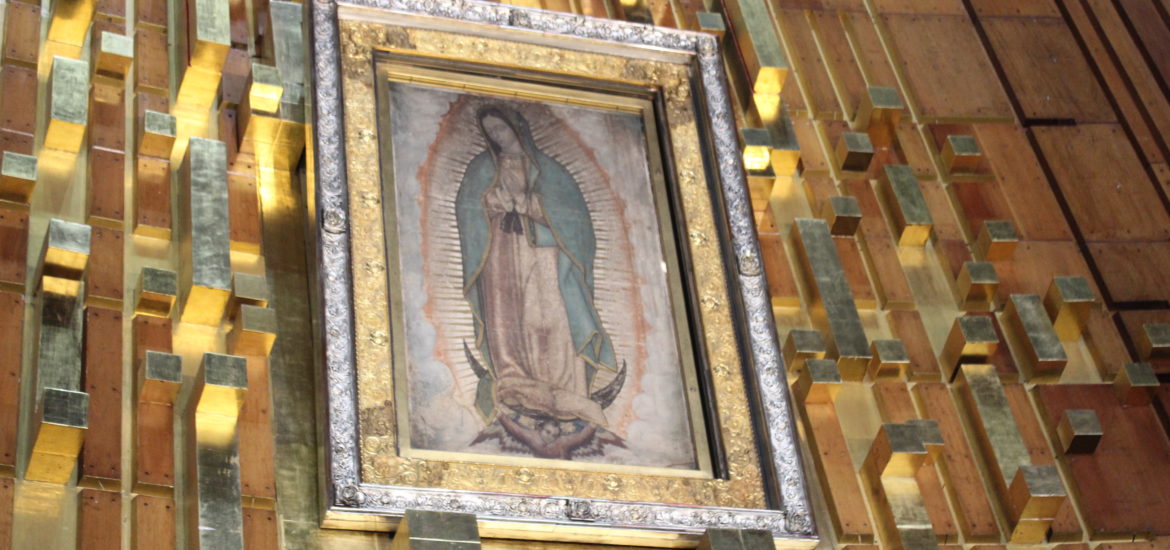After a great first two days in Mexico City, as mentioned in my previous short article, we woke up to an absolutely gorgeous Saturday morning in Mexico City. At Joe’s recommendation, I walked about 7 minutes from where we were staying at Hotel Posada Viena over to Café NiN to have breakfast at close to 10am. Everyone was sort of on their own schedule after our first full day and late night in Mexico City. Café NiN was packed with about a dozen people waiting outside for a table or a place to sit. After about a ten-minute wait, I was seated at the corner of one of the bars.
Over pastries, scrambled eggs mixed in with small pieces of bacon, mandarin juice, water, and a latte, I finished reading the last chapter of a book I had started earlier in the week, Our Lady of Guadalupe: Mother of the Civilization of Love. Later in the day, we would visit the site where Mary, the Mother of God, appeared to an Indian man, Juan Diego, in the year 1531. For now, I was content to finish this book which I felt had brought me much deeper in my faith this week and much closer to the people, history, and spirit of Mexico.
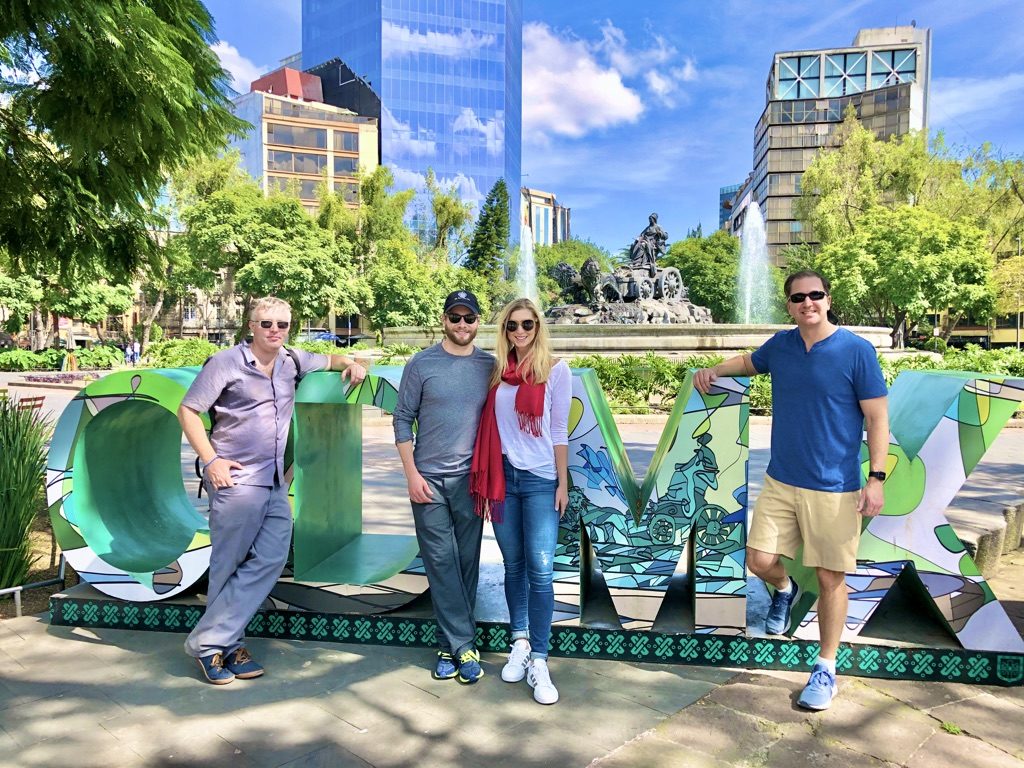
Right as I was finishing the last paragraphs of this book, almost on cue, Joe had arrived to Café NiN with Chad and Hillary. Two of them picked up some coffee and we were on our way. Joe had suggested we “walk the parks” of Mexico City today. We did that, walking through different neighborhoods in the city, and in and out of various public parks. I was very surprised by the number of parks and green spaces that are sprinkled throughout Mexico City. I can’t name all the parks off hand, but I know one of the last ones we were at was Parque Espana, where we encountered a man with a dog who was fetching a ball and later a stick. That’s where we reunited with most of the rest of our group, as we continued to walk through other parks, even seeing some ducks splashing in fountains.
From there, we had reservations for lunch at nearby Contramar. Our entire group met up there and within 10 minutes after we sat down the place just got super packed. I was having fun just watching the wait staff, hosts, and cooks moving and grooving with excellent service and great food. Unfortunately, one in the group, Brittany, was not feeling well and had to return back to her hotel room to rest. Luckily, she let her husband Scott continue to enjoy the remainder of the day with the rest of us.

After lunch, our private cars were summoned and we drove about 30 minutes across town to be dropped off at Mexico City’s main plaza, where we visited the Cathedral Metropolitan de la Ciudad Mexico. It is huge and it is beautiful inside and out. In the main plaza, there was a festival of the flowers going on, which was also taking place as part of the Dia De Los Muertos, the festival of the dead, which happens during the month of November. On the Catholic calendar, All Saints Day is November 1 and All Souls Day is November 2. It seems that in Mexico and Latin America, the spirits of the dead are celebrated well beyond Halloween. After gathering for a group photo in the plaza, our private vehicles were summoned again to guide us out of the traffic and towards the Basilica of Our Lady of Guadalupe, about a thirty minute ride away, on the outskirts of Mexico City.
When we arrived to the Basilica, it was sort of like its own little town that surrounded it, complete with a McDonalds, taco restaurants, souvenir shops, and the like. Our drivers dropped us just a few minutes’ walk to the front gates, to the grounds of the Basilica.
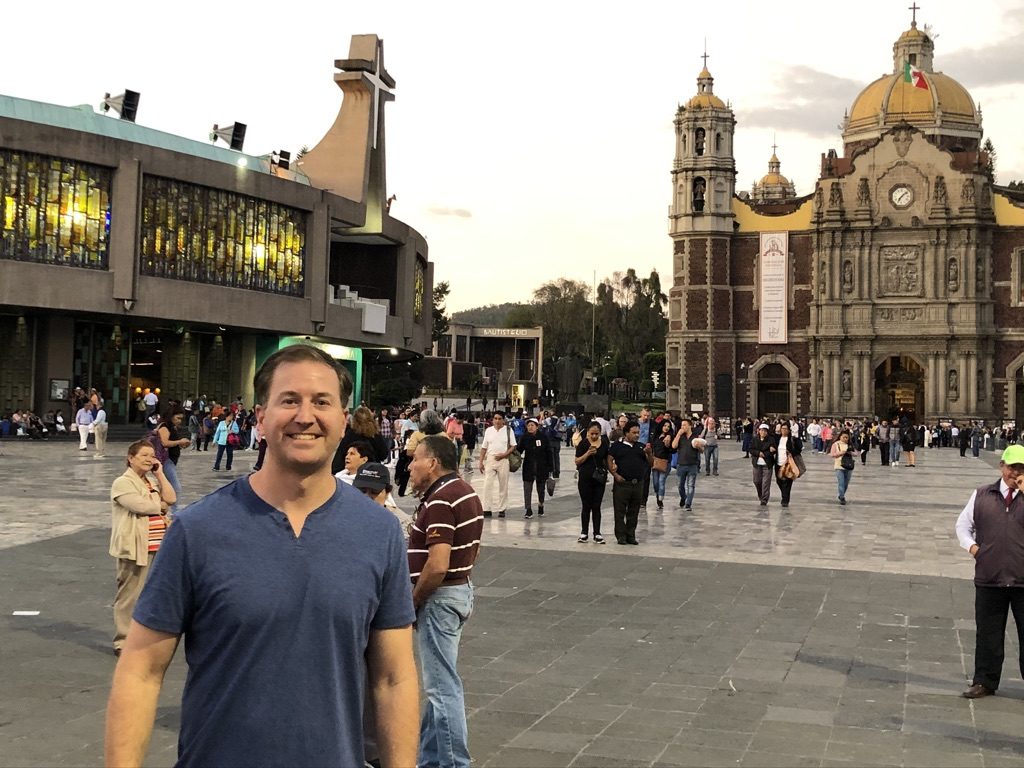
Please allow me to give some context to just how special this place is. In 1531, Our Lady, the Mother of God, appeared to an Indian man, Juan Diego, on Tepeyec Hill, the area where we now were situated just outside of Mexico City (sort of a suburb today).
Juan Diego and his wife had recently converted to Christianity only 6 years earlier, and just a few years after that, his wife passed. He was a very devout man, and walked miles every day just to attend mass. From December 9th through the 12th in the year 1531, Mary, the Mother of God, appeared to him here on this spot where we visited today and conversed with him every day during those four days.
On the final day, December 12, she told him to pick up some of the flowers from the hill, put them in his tilma (which is sort of like an overcoat) and present them to the Bishop. Juan Diego pleaded with Mary that he was someone of no significance and the Bishop would not see him. He wondered why, if she had a message for the Bishop, she could she not just appear to him?
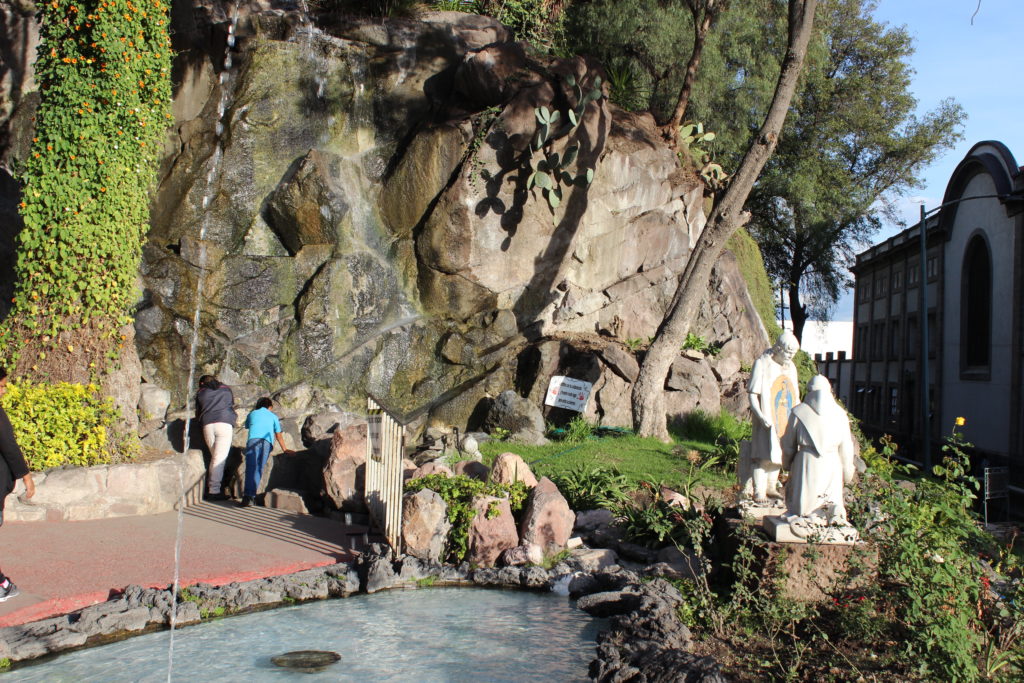
Mary told Juan Diego to have faith and to trust in her – I suppose much like the Angel Gabriel once told Mary to trust in the Lord when she was asked to carry the Son of God to birth and raise him. Well, when Juan Diego opened his tilma to present the flowers to the bishop, the flowers had pressed upon his tilma, and a very detailed image of Mary appeared.
On this image, Mary had a brown face and appeared as a mestiza woman, with mixed Spanish and Indian features. It was a sign to the Indians, who were mostly under the Aztec culture at the time, that this was indeed the Mother of God and that this message was for them. It was also a message to the Spanish that the Indians were also children of God and should be treated as such. Mary had requested that a chapel be built on Tepeyac Hill – and within two weeks, a chapel was built on this spot. She also requested that she be called Our Lady of Guadalupe, despite the fact that there were no place names yet in the Americas with the name Guadalupe. Over the next decade, it is estimated that 9 million indigenous peoples in the Americas converted to Christianity, largely due to this miracle. Before this time, the missionaries had very little success.
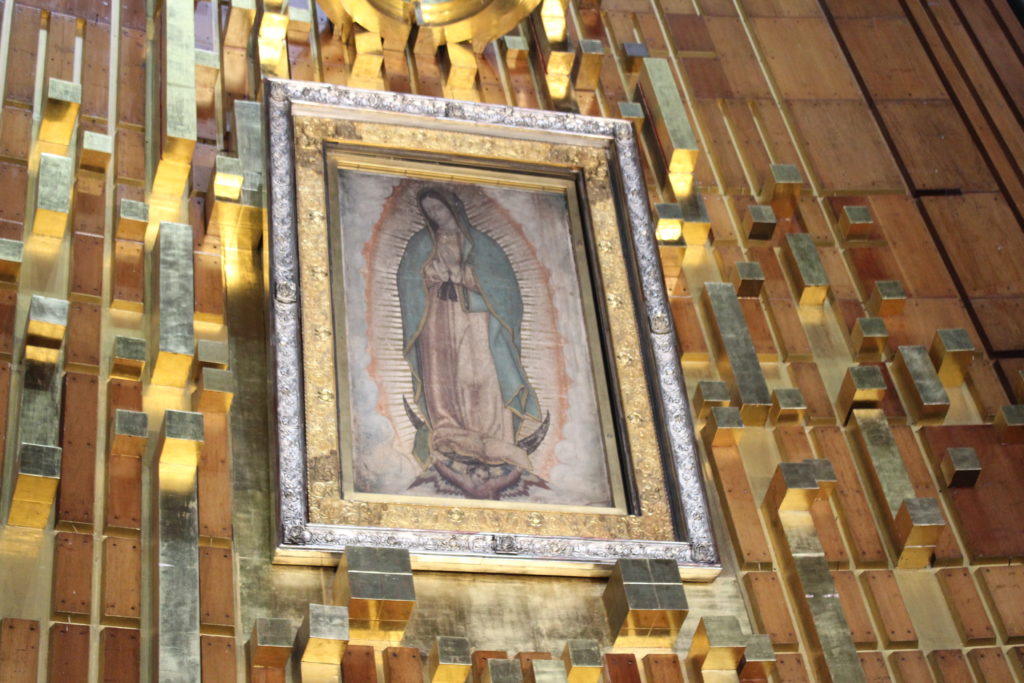
On this day, we were able to visit the Basilica of Our Lady of Guadalupe, where Juan Diego’s tilma still stands. You have probably seen its image around the world many times, in many homes, and in many places. The original tilma is here and it has endured nearly 500 years, including a bomb attack here in 1921, where many parts of the church were destroyed, but the tilma was unharmed.
The Basilica that you visit today is really huge and was opened in the 1980s. It is where mass is celebrated almost every hour to accommodate the number of pilgrims that come here every day. And we saw them pouring in. I was told by our new friend Monica, who has spent much time here and happened to be here visiting from Virginia, that there are crowds like this every day. It seemed to me the vast majority of them were from Mexico and other parts of Latin America, but there are people like us from the United States and others from around the world that come here to bear witness to the miracle image that appeared on Juan Diego’s tilma. The image of Our Lady of Guadalupe represents so much for so many, but most especially for the people of the indigenous cultures who were here in the Americas and had not yet heard or believed in the Word of Jesus Christ.
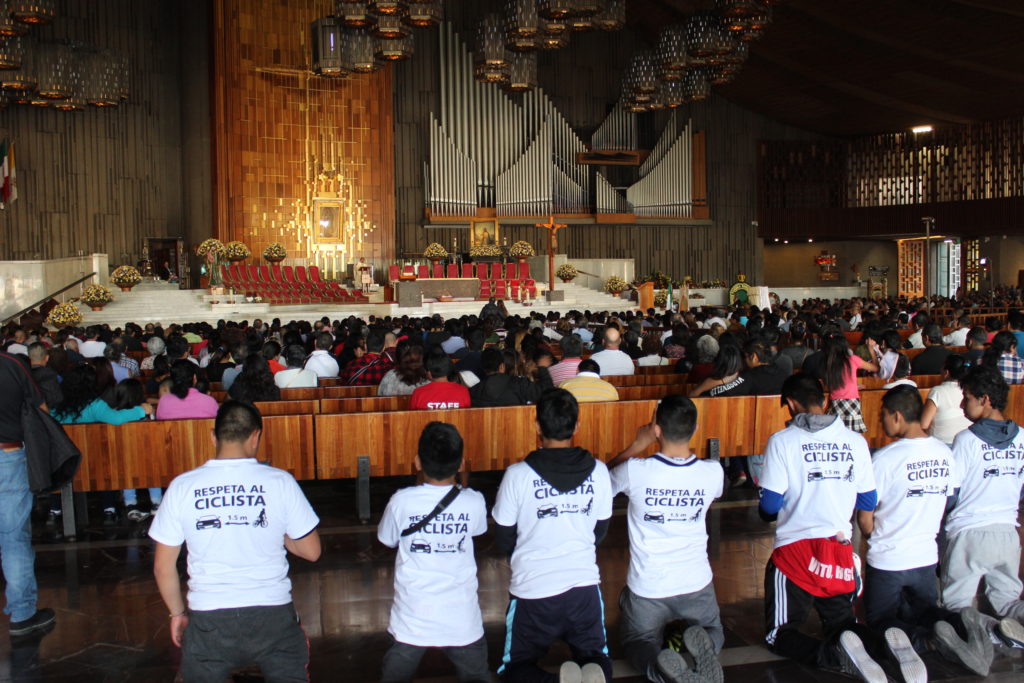
On this same site, another large church still remains. It was built a few hundred years ago, but it would not be able to continue to hold the amount of people that come here. Above that church on the top of the hill – Tepeyac Hill – is the older chapel on the site where the original chapel was requested by Mary to be built. It is where Juan Diego spent most of the rest of his life after the appearance of Mary. He spent time here in prayer, celebrating mass, and greeting pilgrims, sharing what he had experienced. After visiting all three of these structures, I went back to the large one, where Juan Diego’s tilma is hanging on the wall behind the altar. The new structure is really unique in that pilgrims can go below the tilma, on the other side of the wall, where they cannot be seen by those celebrating mass. Thus, it is a place that moves through many pilgirms (on a set of slow-moving conveyer belts) while other pilgrims celebrating mass can still have their eyes on the tilma.
And, oh what beauty our eyes did see. When you come here, you have the opportunity, to place your own eyes on a miracle. During our visit here, we saw a sign that was given to one of the Lord’s most humble servants, in the place where he received it from Our Lady, Our Lady of Guadalupe. God has opened his arms to all of us, he has opened heaven to us, many times throughout human history, to see his wondrous glory and hear his divine message. And visiting here today, I saw a miracle with my own eyes. It was beyond the capacity to comprehend.
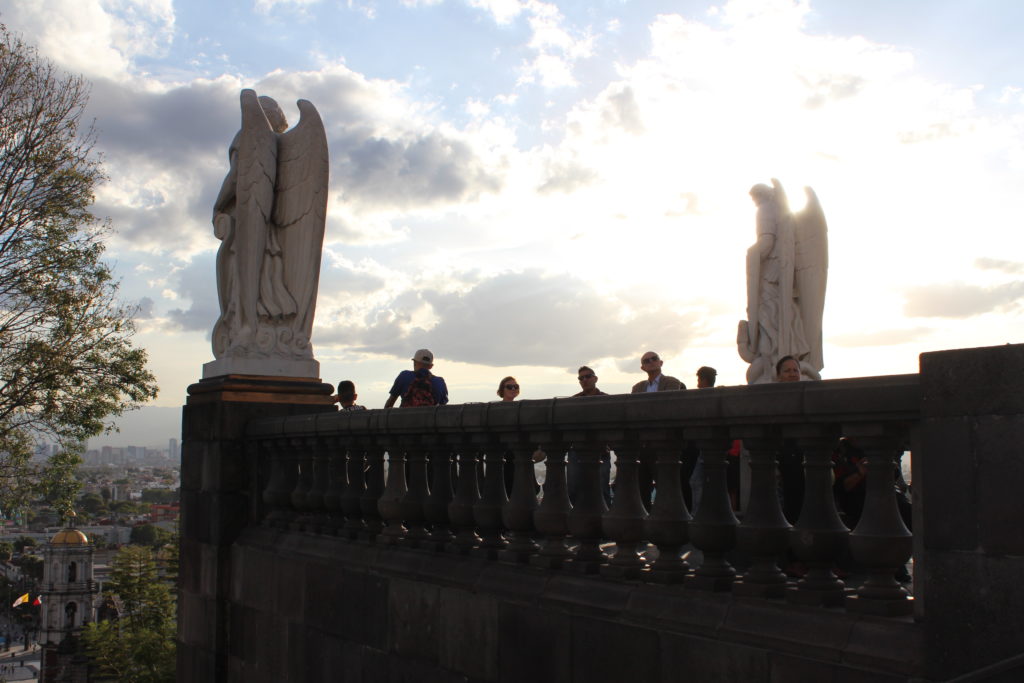
I said prayers for many friends and family while visiting. I also attended mass in the Basilica, where Pope John Paul II visited in 2002, in the canonization mass for Juan Diego’s sainthood. But, remarkably, Pope John Paul II first visited this site at the very beginning of his papacy, in 1979, and said, “To understand man, one must delve into the depth of the mystery; to understand a nation, one must come to its shrine.”
In the book I completed earlier in the day, the authors, Carl Anderson and Ernesto Chavez, insist that “Few shrines express this so clearly as Mexico’s Basilica of Our Lady of Guadalupe. In fact, the history of Mexico becomes incomprehensible without understanding its people’s devotion to Our Lady of Guadalupe.” They also added that, “Although we often recognize Our Lady of Guadalupe’s apparition as a defining moment in the life of St. Juan Diego, it was also a critical turning point for the Indians, the Spaniards, and [Bishop] Zumárraga himself, whose constant conflicts had led him to despair about the future of the land. History’s first quantifiable indication of a massive, radical change in lives beyond Juan Diego’s own was a flood of conversions after the apparitions—inspiring John Paul II to call Our Lady of Guadalupe the first evangelist to Mexico.”
They also added that, “At a time when the humanity of the Indians was still contested, the Virgin’s mestiza face and her declaration of motherhood were a truly great expression of the Indians’ humanity. When she declared she was the mother of Juan Diego, Mary removed any doubt: the Indians were indeed children of God and entitled to respect. In her mestiza face, the Indians recognized the Virgin not as a European but as a person of the New World, sharing in their distinct cultural identity and in their unique physical traits. For the Spanish, too, there is a profound message: these children were loved to such a degree that the mother of God took on their appearance, becoming family.”
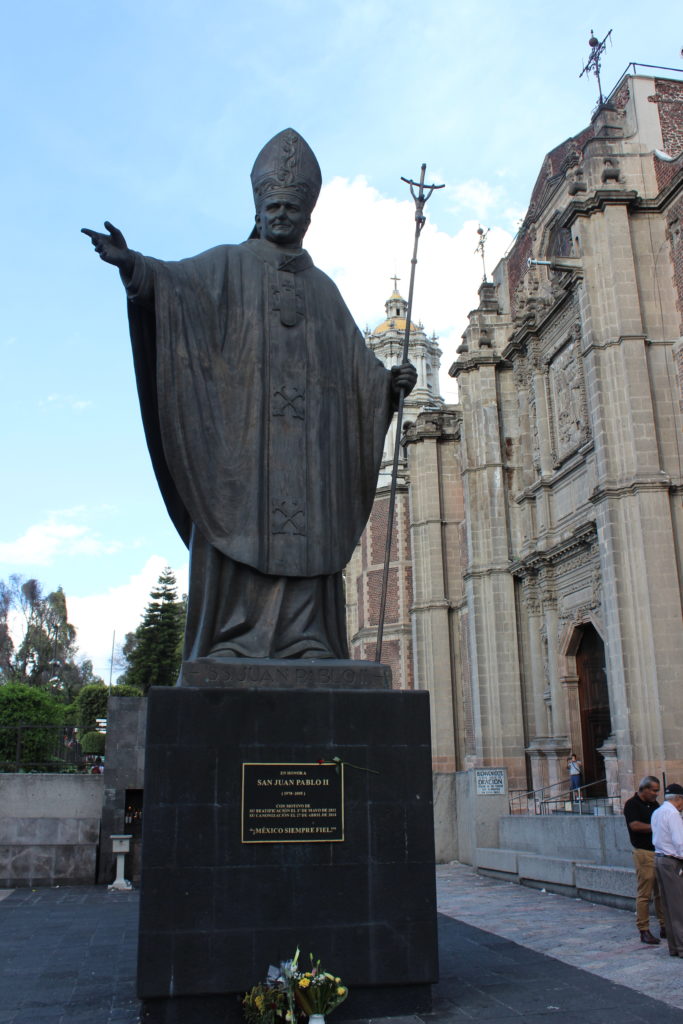
What a special place here on Tepeyec Hill, where saints, including John Paul II and Juan Diego, have passed, and where Our Lady made herself known to new people in a New World. During mass here, I received the Blessed Sacrament with thousands of other pilgrims. We are blessed that we were given this opportunity to see this tilma and visit this site. I pray all can make it here and continue to form a deeper connection with Mary, and with her Son, Our Lord, Jesus Christ.
As our visit to the Basilica of Our Lady of Guadalupe concluded, I was able to share an Uber ride back with Monica, who has come here many times. She is a nurse practitioner in northern Virginia and continues to feel a calling to visit the Basilica of Our Lady of Guadalupe. While she is an American, she mostly grew up in Mexico, as her parents were missionaries. It was truly a treasure to get to hear from her first hand about what this place means to her and what it means to the people of Mexico.
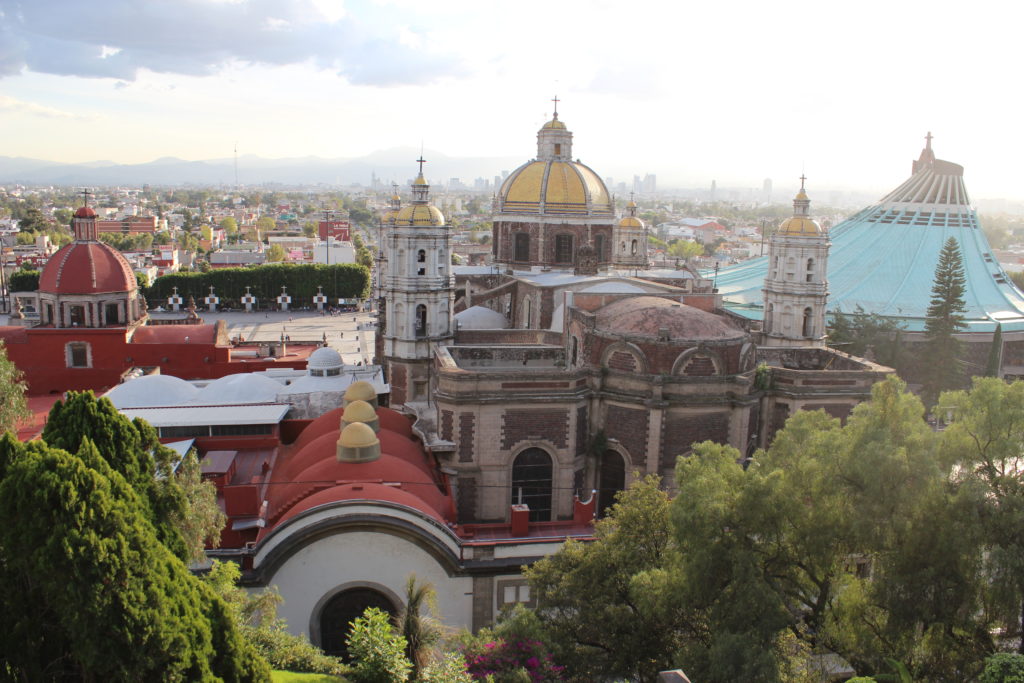
John Paul II’s words seem poignant: “To understand man, one must delve into the depth of the mystery; to understand a nation, one must come to its shrine.” On our visit here, we gained a deeper appreciation of the nation of Mexico and of the people who make up this land. And, I believe we are all still diving into the depth of the mystery of this place. And, as we strive to dive deeper into the mystery, the closer to the Lord we shall become.
